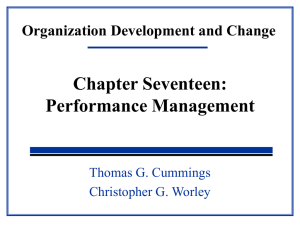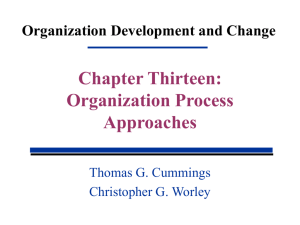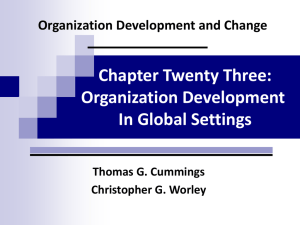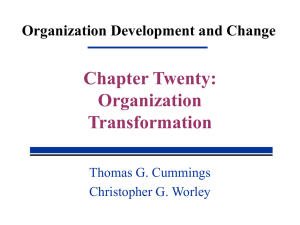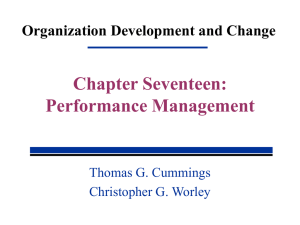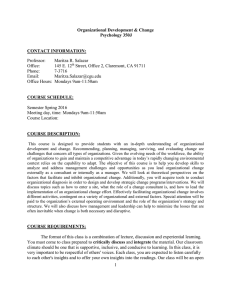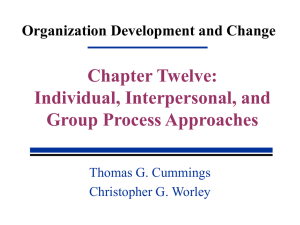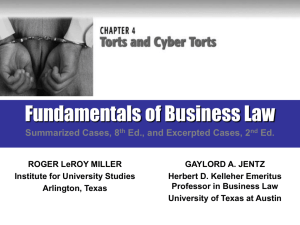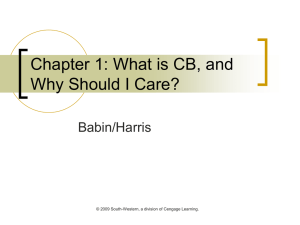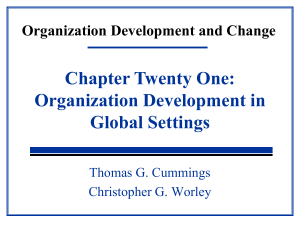File - Elizabeth Kay King
advertisement
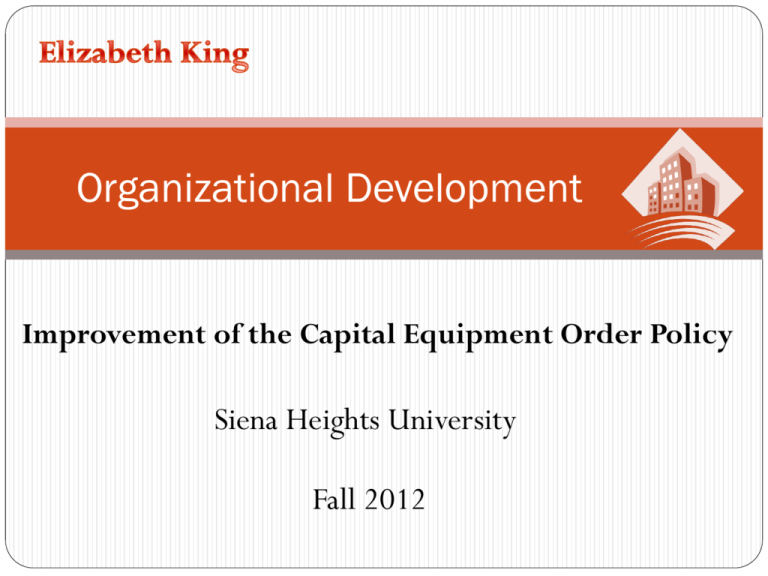
Organizational Development Improvement of the Capital Equipment Order Policy Siena Heights University Fall 2012 Contents Definitions ……………………….. Slide 3 Positive Model …...………………. Slide 4 Comprehensive Model for Diagnosing Organizations ……..Slide 5 Introduction Problem Statement Gaps Machine performance Missed delivery dates High costs General Model of Planned Change.….Slide 6 Data Collection and Feedback Cycle…Slide 7 Force Field Analysis………………...Slide 8 Planning and Implementing Change…Slide 9 Evaluation and Implementation…….Slide 10 Conclusion.…………………...….Slide 11 Introduction of Business Automotive parts supplier Producing vehicle heating and cooling exchange systems Fully owned subsidiary Parent company located in Japan Workforce of approx 3,000 Definitions Organizational Development M i c h a e l B e e r s Capital Equipment “A system-wide process of data collection, diagnosis, action planning, intervention, and evaluation aimed at: (1) enhancing congruence between organizational structure, process, strategy, people, and culture; (2) developing new and creative organizational solutions; and (3) developing the organization’s self-renewing capacity. It occurs through collaboration of “Equipment that you use to manufacture a product, provide a service or use to sell, store and deliver merchandise. This equipment has an extended life so that it is properly regarded as a fixed asset.” organizational members working with a change agent using behavioral science theory, research, and technology.“ Cummings & Worley, 9e (c) 2008 South-Western Cengage Learning Capital Equipment Small Business Encyclopedia, 2012 Positive Model Initiate the Inquiry: Members choose problem that they have the most energy to undertake. Inquire into Best Practices: Gather information of what work and why. Initiate the Inquiry Inquire into Best Practices Discover the Themes: Decide as a group the common principles found in the list of best practices. Discover Themes Envision a Preferred Future: Use the common principles as the starting point for moving from the standard practice into a ideal future. Design and Discover Ways to Build a Preferred Future: Plans and actions intended to produce preferred future Envision a Preferred Future Design and Discover Ways to Build a Preferred Future Cummings & Worley, 9e (c) 2008 South-Western Cengage Learning Figure 3 Comprehensive Model for Diagnosing Organizational Systems A. Organizational Level Inputs Design Components Outputs Technology General Environment Inputs Industry Structure Strategy Structure Culture HR Systems B. Group Level Inputs Measurement Systems Design Components Goal Clarity Task Structure Team Functioning Organization Design Inputs Group Composition C. Individual Level Inputs Organization Design Inputs Group Norms Design Components Task Identity Task Significance e.g. performance, productivity, stakeholder satiisfaction Outputs Team Effectiveness e.g. quality of work life, performance Outputs Individual Effectiveness Skill Variety Group Design Personal Characteristics Organization Effectiveness Autonomy Feedback about Results Cummings & Worley, 9e (c) 2008 South-Western Cengage Learning e.g. job satisfaction, performance, absenteeism, personal development General Model of Planned Change Entering and Contracting • Initial step in the organizational development process involving initial contact from an organization, discussing the initial problem statement, determining the true client, and developing the contract. Diagnosing • Process of understanding the systems that are functioning within an organization leading the consultant to determine the root cause of issues and the best method to implement change. Planning and Implementing Change Evaluating and Institutionalizing Change • Actions used to disrupt the normal running of business in order to create positive change that increases the organization’s effectiveness • Providing feedback to the organization about their success with the intervention. Includes next steps to make the change permanent, or the determination to start the organizational development process again. Cummings & Worley, 9e (c) 2008 South-Western Cengage Learning The Data-Collection and Feedback Cycle Core Activities Planning to Collect Data Collecting Data Analyzing Data Feeding Back Data Following Up Cummings & Worley, 9e (c) 2008 South-Western Cengage Learning Results Force-Field Analysis Forces for Change Lack of time to devote to planning Poor supplier performance No personal reward for improving process High Machine Costs Lack of Management Support Desired Performance Friction between two departments Forces for Status Quo Lack of time to devote to daily problem solving Low understanding of other departments process Desire to improve from past failures (MindTools, 2011) Results Planning and Implementing Change Structural Process Intervention Best Practices 1. 2. 3. 4. 5. Supplier Kick-off Meeting Detailed Cost Breakdown Sheet Exception from Specification Worksheet Order Policy Document Purchasing involvement from project start Results Evaluation and Institutionalization Diagnosis Implementation and Evaluation Feedback Implementation of Intervention Design and Implementation of Interventions Clarification of Interventions Development of Plan for Next Implementation Steps Cummings & Worley, 9e (c) 2008 South-Western Cengage Learning Implementation Feedback Measures of the Features of the Intervention and Immediate Effects Evaluation Feedback Measures of the Long-term Effects Conclusion • Diagnosis at the group level accompanied with adequate consulting skills brought positive changes to the organization. • Engagement of individuals from multiple departments to find best practices strengthened the work team. References Capital Equipment Small Business Encyclopediea. (2012). Retrieved November 1, 2012, from Entrepreneur.com: http://www.entrepreneur.com/enclyopedia/printthis/82028.html MindTools. (2011). Retrieved 1 2012, November, from Force Field Analysis - Decision-Making Skills from MindTolls.com: http://www.mindtools.com/pages/article/newTED_06.htm (2009). In T. G. Cummings, & C. G. Worli, Theory of Organizational Development and Change. Stamford, CT: CENGAGE Learning.
